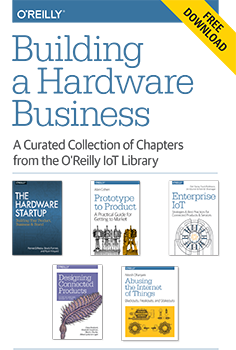"product development" entries

Chrissie Brodigan on user research at GitHub
The O’Reilly Design Podcast: Product development, user research, and identifying blindspots.
Subscribe to the O’Reilly Design Podcast, our podcast exploring how experience design—and experience designers—are shaping business, the Internet of Things, and other domains.
In this week’s Design Podcast episode, I sit down with Chrissie Brodigan, manager of user experience research at GitHub. Brodigan will be be speaking at OReilly’s inaugural Design Conference. In this episode, we talk about user research and product development at Github, and the blindspots in product development and organizational development.
Here are a few highlights from our conversation:
Our internal philosophy around research is about when we make our design decisions, we come up with hypotheses about how that design change will impact behavior as well as user experience. We may need to add a particular control to the workflow, but if it has a negative consequence on the overall experience of our users, we may decide that that’s not the right decision for us. Even if it’s helpful in one area, it causes unhappiness in another. We measure impact with controlled experiments, which a lot of people would refer to as ‘AB testing.’ We do do some variance testing, which is short term, but we also do longitudinal analysis, which is to study a cohort over a longer period of time. Internally, we’re always asking ourselves ‘Why?’

Brady Forrest and Renee DiResta on advising hardware startups
The O’Reilly Solid Podcast: Hardware startup success stories, pitfalls, and best practices.
Subscribe to the O’Reilly Solid Podcast for insight and analysis about the Internet of Things and the worlds of hardware, software, and manufacturing.
 Hardware startups are starting to look like software startups: a lean company can bring a reasonably simple piece of consumer electronics to market for a few hundred thousand dollars.
Hardware startups are starting to look like software startups: a lean company can bring a reasonably simple piece of consumer electronics to market for a few hundred thousand dollars.
Behind that low figure are technological advances (like 3D printing and CNC machining that make prototyping faster and easier) as well as organizational advances — in particular, hardware incubators and accelerators that offer funding and help founders work their way through the product development process.
In our new episode of the Solid Podcast, David Cranor and I talk with Renee DiResta and Brady Forrest, co-authors (along with Ryan Vineyard) of The Hardware Startup: Building Your Product, Business and Brand. DiResta is vice president of business development at Haven, a marketplace for ocean freight shipping, and Forrest runs Highway1, a leading hardware incubator.
Forrest and DiResta take us into the trenches on a wide range of topics, including design for manufacture (DFM), idea validation, crowdfunding, cost control, marketing, packaging, and shipping. It’s a quick tour of the tricky areas of expertise that hardware founders need to develop. Read more…

The 11 deadly sins of product development
Creating great hardware and software means avoiding these product-killing pitfalls.
Editor’s note: This post is an excerpt from “Prototype to Product: A Practical Guide for Getting to Market,” by Alan Cohen.
Thomas Edison famously said that genius is “1% inspiration, 99% perspiration,” and his observation holds true for product development. Developing “genius-level” products certainly requires inspiration, but the bulk of the effort is more like perspiration: work that benefits from insight and cleverness, but is also largely about not screwing up. Most product development efforts fail. It’s been my observation that failures are not usually due to a lack of inspiration (i.e., poor product ideas), but rather from mistakes made during the “perspiration” part.What follows is a brief catalog of the most popular ways to wound or kill product development projects. Most efforts that get derailed do so by falling into one or more of a small set of fundamental traps that are easy to fall into, but are also fairly avoidable. As an organizational construct, I refer to the specific traps as sins and the more-general negative impulses behind the sins as vices. And since these sins are often fatal, I call them deadly sins to remind ourselves of their degree of danger. Before we get into the specific vices and sins, let’s start off with the fundamental principle that lies behind all of these, a basic truth that largely determines success or failure. Read more…

